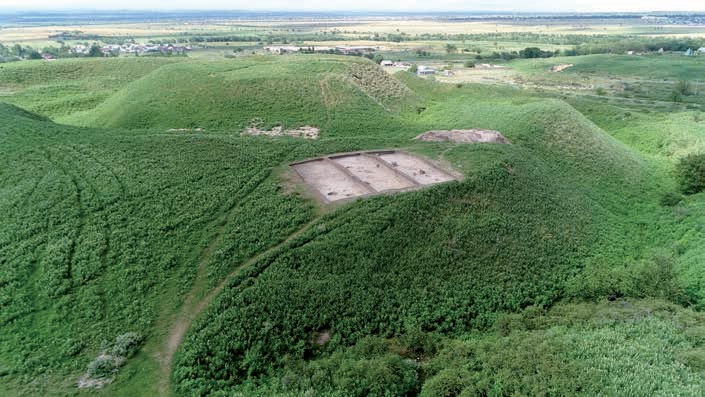ARCHAEOLOGICAL EXCAVATIONS of the RAKHAT SETTLEMENT in the 2019 FIELD SEASON
DOI:
https://doi.org/10.52967/akz2020.2.8.65.77Keywords:
archaeology, Jetysu, the reserve-museum , association , the ancient city of Rakhat, ceramics, medieval, excavation, archaeological exploration, stratigraphy, cultural layerAbstract
The article presents the results of field research in 2019, conducted within the framework of the scientific research project archaeological study of the semiosis of material culture of the population of Jetysu: from the Saks era to the XIII century, on the materials of monuments that are part of the archaeological complex Rakhat for introduction into scientific circulation and further use for cultural, educational, museum and tourist purposes. According to the preliminary conclusion, we can say that the Rakhat archaeological complex is a unique place where we can trace the history of the inhabitants of the region from the Stone Age (the upper Paleolithic site was found) to the ethnographic period (mills and dugouts of the XIX century). Further study of the settlement will give a more complete picture of the life and economy of the medieval city in the Issyk microregion. Thus, the archaeological research carried out by the “Issyk” reserve-museum in the Rakhat gorge indicates the exceptional uniqueness of the studied objects of historical and cultural heritage, which can be used to trace the continuity of historical epochs over tens of thousands of years, which tells us that the Jetysu region was inhabited and settled by people for a huge period of time due to its attractive geological, morphological and climatic conditions.
References
Baipakov, K. M. 2008. Poseleniya sakov i usunei na territorii Jetysu i Almaty (Settlements of Sakas and Usuns Jetysu and Almaty). Almaty: Id «Credo» (in Russian).
In Arkhiv Instituta arheologii (Archive of the A.Kh. Margulan Institute of Archaeology), f. 11, op. 2, d. 2659, 18p. (in Russian).
Baipakov, K. M., Savelyeva, T. V., Chang, K. 2002. Srednevekovye goroda i poseleniya severo-vostochnogo Jetysu (Medieval towns and sities of north-eastern Jetisu). Almaty: A.Kh. Margulan Institute of Archeology Publ. (in Russian).
Bartold, V. V. 1927. Istoriya kulturnoi zhizni Turkestana (The history of the cultural life of Turkestan). Leningrad: USSR Academy of Sciences Publ. (in Russian).
Bartold, V. V. 1963. Obshie raboty po istorii Srednei Azii (General works on the history of Central Asia). Sochineniya: v 9 t. T. 2, kn. 1. Moscow: “Vostochnaya literature” Publ. (in Russian).
Bernchtam, A. N. 1940. In Kratkie soobshcheniya Instituta istorii materialnoy kultury (Brief Communications from the Institute of the History of Material Culture), 6, 34–43 (in Russian).
Bernshtam, A. N. 1949. In Sovetskaya arheologiya (Soviet archeology), IX, 337–384 (in Russian).
Klyashtornyi, S. G., Sultanov, T. I. 1992. Kazahstan. Letopis trekh tysyacheletiy (Chronicle of three millennia). Alma-Ata: “Rauan” (in Russian).
Mukhtarova, G. R., Tulegenov, T. J., Qurbanali, J., Din Yan, MiauIfei, Jau Han Chin. 2018. In «edu.ehistory.kz», 2 (14). URL: http://edu.e-history.kz/ru/publications/view/837 (in Kazakh).

Downloads
Published
How to Cite
Issue
Section
License
Copyright (c) 2020 T. J. Tulegenov, A. G. Chekin, J. Kurbanali

This work is licensed under a Creative Commons Attribution-NonCommercial 4.0 International License.






